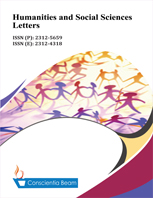Examining the reliability and validity of measuring scales related to informatization and instructional leadership using the PLS-SEM approach
DOI:
https://doi.org/10.18488/73.v12i3.3789Abstract
This study focuses on six variables that impact teachers' use of technology in their instructional leadership: usage expectancy (UE), social influence (SI), enabling circumstances (FC), behavioural intention (BI), computer self-efficacy (CSE) and blended teaching competency. This study aimed to examine the reliability and validity of modified scales incorporating UE scales including the PE scale, EE scale, SI scale, FC scale, CSE scale, BTC scale, BI scale and TIIL scale. A total of 60 in-service university teachers participated in this research. The PLS-SEM approach was employed to examine the reliability and validity of all scales. Composite reliability (CR) and Cronbach’s alpha determine internal consistency and reliability. Convergent validity was assessed by the outer loading and the average variance extracted (AVE). Assessment of discriminant validity was conducted by the Fornell-Larcker criterion, cross-loadings and Heterotrait-Monotrait Ratio (HTMT). After deleting nine items that were lower than .40, Cronbach’s alpha and CR values were all higher than .70. All scales’ item values fulfilled the criteria of AVE (>.50), Fornell-Larcker criterion, cross-loading and HTMT(<.90). Assessment results indicate that all modified scales have established validity and reliability for in-depth research. This research contributed to the PLS-SEM research technique, examined TIIL's influencing elements in the Chinese environment, enhanced the theoretical model of TIIL and provided useful assistance for the field's advancement.

